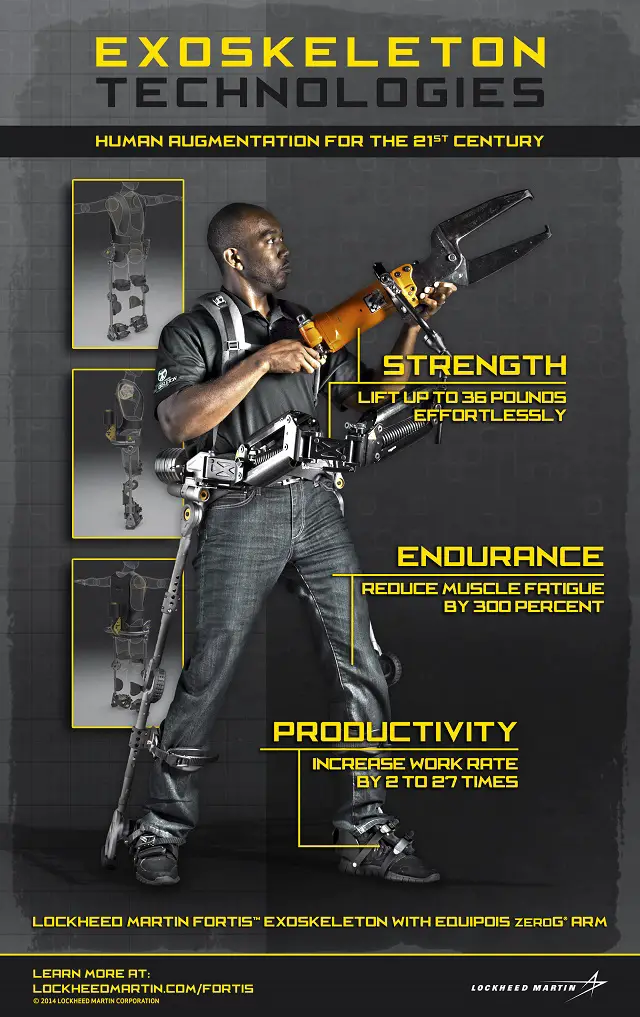 The FORTIS exoskeleton augments the strength and endurance of maintenance personnel in the physically demanding shipyard environment. Picture: Lockheed Martin |
|||
Because its ergonomic design moves naturally with the
body and allows operators to maintain flexibility, operators are not hindered
by the exoskeleton. This means operators can work longer and more effectively
with reduced fatigue from overuse.
Lockheed Martin has been investing in exoskeleton research and development for more than five years, most recently through the NCMS Commercial Technologies for Maintenance Activities (CTMA) program. These investments have led to advancements in powered and unpowered exoskeleton systems for applications ranging from military to industrial. “We are pleased that once again a technology advanced through our highly successful CTMA program will be put into commercialization,” said Rick Jarman, president and chief executive officer of NCMS. “The Lockheed Martin FORTIS exoskeleton contract is just another example of how collaboration around research and development speeds the time to market for these important innovations. We applaud Lockheed Martin for seeing the value in our CTMA program.” |
|||
U.S. Navy To Test And Evaluate Lockheed Martin FORTIS Exoskeletons
- Posted On




